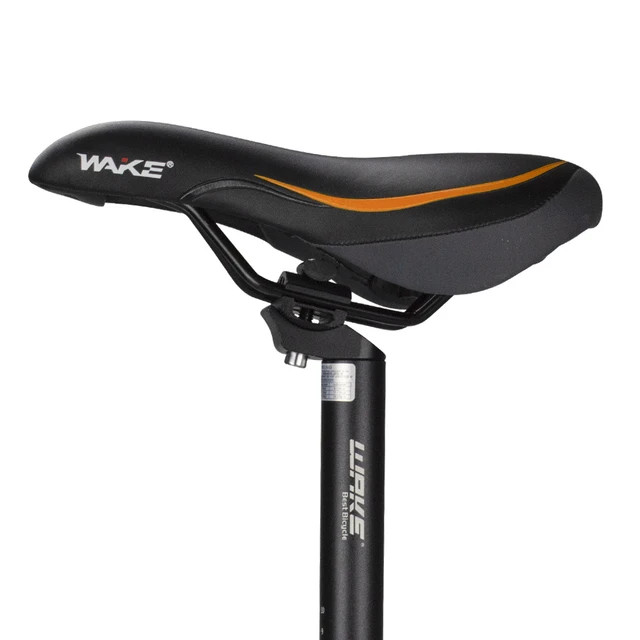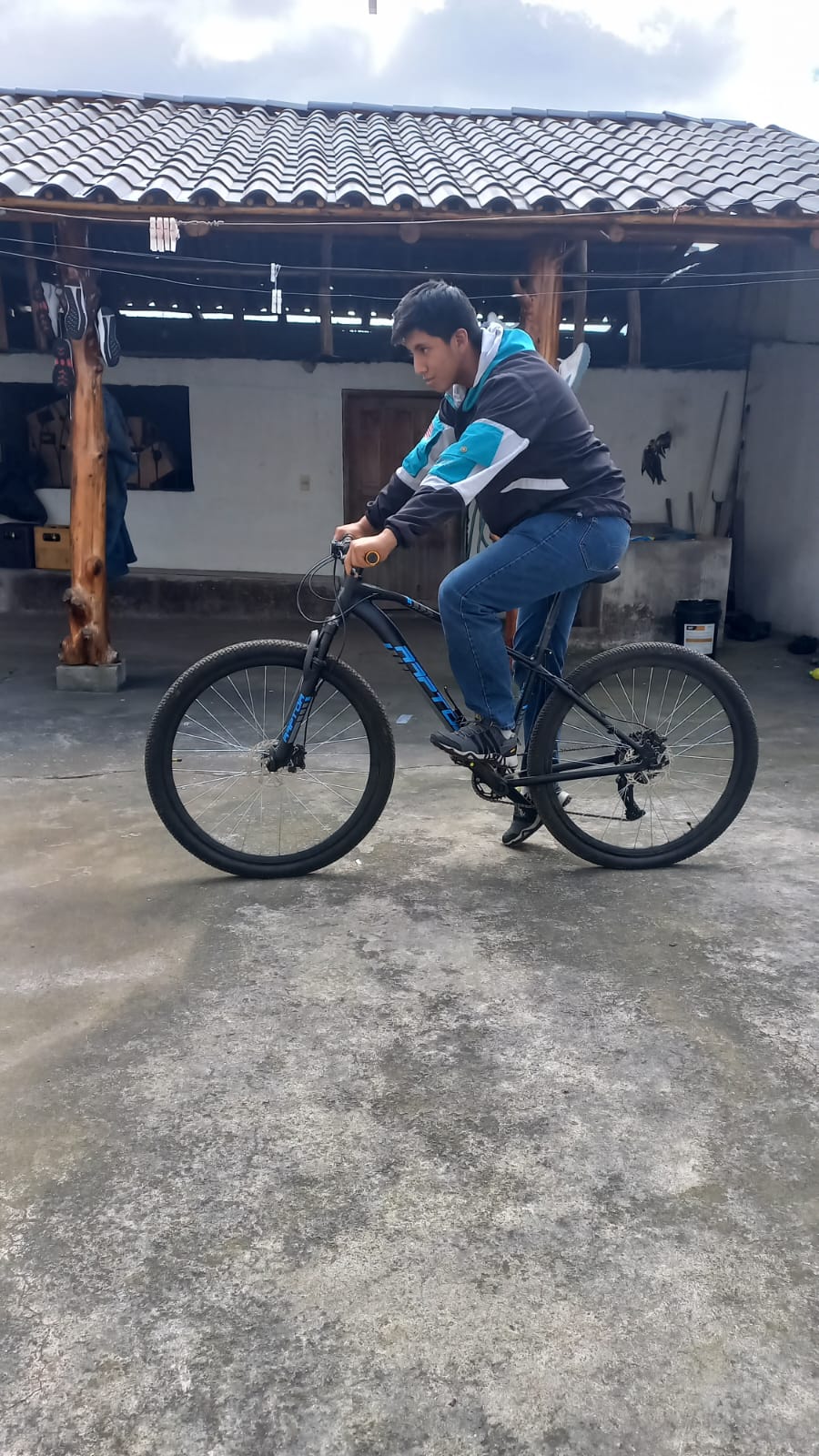Bicycle Seat

A bicycle seat, also known as a saddle, is made up of various materials that contribute to its comfort, durability and performance. Here is a description of the typical saddle components:
1. Outer Cover
Common Materials:
Leather: Offers a durable and comfortable surface that adapts to the cyclist's body over time.
Synthetic (PVC, polyurethane): It is resistant to water and wear, as well as being more affordable than leather.
2. Padding
Common Materials:
High-density foam: Provides good cushioning and support, maintaining shape over time.
Gel: Offers superior comfort by molding to the cyclist's body, ideal for long distances.
3. Base
Common Materials:
Plastic: Light and economical, provides a firm structure.
Carbon fiber: Ultralight and very resistant, used in high-end saddles.
Reinforced Nylon: Offers a balance between weight, flexibility and durability.
4. Rails
Common Materials:
Steel: Robust and economical, although heavier.
Chromium-molybdenum (Chromium): Lighter than steel and quite durable.
Titanium: Very light and resistant to corrosion, used in premium saddles.
Carbon fiber: Ultralight and rigid, also used in high-end saddles.
5. Non-Slip Covers and Reinforcements
Common Materials:
Rubber or silicone: Used in strategic areas of the saddle to improve grip and durability.
These combined materials allow the bicycle saddle to provide comfort, support and resistance, adjusting to the specific needs of different types of cyclists and cycling modalities.

Carrying your bike seat high has several advantages and disadvantages. The most relevant aspects are detailed below:
Advantages
Better Pedaling Efficiency:
Correct Body Alignment: A high seat allows for proper leg extension, which improves pedaling efficiency and reduces muscle fatigue.
Maximum Strength: Facilitates greater power in each pedal stroke by making better use of the leg muscles.
Injury Reduction:
Less Stress on the Knees: Helps prevent knee injuries by reducing the angle of excessive flexion and extension during pedaling.
Greater Control and Stability:
Weight Distribution: A high saddle position improves weight distribution on the bike, especially on flat terrain and on climbs.
Increased Cadence:
Smoother Pedaling: Allows you to maintain a higher and more constant cadence, which is beneficial for performance in races and training.
Disadvantages
Difficulty in Handling:
Balance: It may be more difficult to maintain your balance, especially when starting and stopping.
Maneuverability: Reduces maneuverability on technical terrain and on steep descents.
Risk of falls:
Quick Disassembly: It can be difficult to quickly disassemble in an emergency, increasing the risk of falls.
Discomfort:
Pressure on the Perineum: A seat that is too high can increase pressure in the perineum area, causing discomfort and possible long-term health problems.
Back Pain: It can cause lower back pain if it does not fit properly to the cyclist's anatomy.
Ground Access:
Difficult Reach: It may be difficult to reach the ground with your feet when stopping, which can be uncomfortable and less safe in urban traffic or at frequent stops.
.
Carrying the bike seat low also has its advantages and disadvantages. Below are the most important aspects:
Advantages
Greater Control and Maneuverability:
Balance: A low seat makes it easier to balance the bike, especially at low speeds and on technical terrain.
Maneuverability: Improves maneuverability on narrow trails and steep descents, allowing quick and precise movements.
Ease of Disassembly:
Ground Access: Allows the rider to easily reach the ground with their feet, which is beneficial during frequent stops and in emergency situations.
Safety at Stops: Provides greater safety and stability when stopping, especially in urban traffic.
Comfort:
Lower Pressure in the Perineum: It can reduce pressure in the perineum area, reducing discomfort during long rides.
Muscle Relaxation: Allows a more relaxed body position, which may be more comfortable for recreational cyclists.
Suitable for Beginners:
Confidence: Helps novice cyclists gain confidence by having an easier time touching the ground and maintaining balance.
Disadvantages
Lower Pedaling Efficiency:
Improper Alignment: A low seat can prevent proper leg extension, reducing pedaling efficiency and increasing muscle fatigue.
Limited Strength: Decreases power with each pedal stroke, which can affect performance on long rides and on climbs.
Increased Risk of Injury:
Knee Stress: Stress on the knees can increase due to excessive bending during pedaling, increasing the risk of injury.
Back Pain: Improper posture can cause lower back pain and other postural problems.
Lower Speed and Performance:
Reduced Cadence: It can be difficult to maintain a high and constant cadence, which affects performance in races and training.
Lower Aerodynamic Efficiency: The lowest position may not be optimal from an aerodynamic point of view.
Discomfort on Long Grounds:
Muscle Fatigue: The least efficient position can lead to greater muscle fatigue on long journeys.
Improper Position: May cause discomfort in the hips and legs due to improper posture.
.